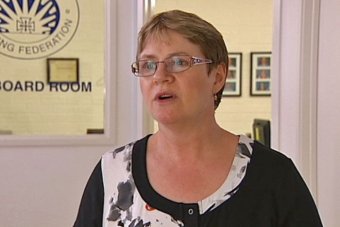A national shortage of practising midwives has put pressure on Canberra’s hospitals, but Australia’s midwifery federation said the shortage is not due to a lack of qualified professionals.
ACT Branch Secretary of the Australian Nursing and Midwifery Federation (ANMF) Jenny Miragaya told 666 ABC Canberra there was “a national and international crisis with regards to shortage of nurses and midwives.”
However, increased nursing and midwifery training opportunities in recent years had not translated to employment figures.
“There are about 3,000 new graduates in Australia who can’t get jobs,” she said.
Australian Institute of Health and Welfare figures reveal there are about 9,000 unemployed nurses and midwives across Australia.
Ms Miragaya said the unwillingness of employers to take on new graduates was a significant contributor to the unemployment figures.
“Certainly new graduates, who are early career nurses, need to be supported to be employed,” she said.
“[New graduates] need the mature cohort of workers there to help them transition and provide that experience and mentoring as they enter the workforce.”
New graduates ‘disillusioned’
National President of Midwives Australia, Marie Heath said retention of new midwives had been a significant contributor to the national shortage.
“We’ve got to be able to make sure that they’re retained because we have a lot of midwives that are leaving the profession after they achieve their qualifications,” she said.
“It’s because they’re not happy about what they’ve actually seen in terms of clinical practice.”
Ms Heath, who is also a practising midwife, said the expectations of new graduates were not being met.
“Many of the new graduates are quite disillusioned around the types of employment positions they can obtain and the types of experience they can actually get on the ground,” she said.
“A lot of them are looking for continuity of care models so they can care for women right through the pregnancy, at birth and post-natal intervals.
“Without being able to get those positions, they become quite disappointed about what they can achieve as midwives.”
Ms Miragaya said the ACT had been part of a push to increase the offering of continuity of care programs (CatCH), but it would only be part of a solution to keep new midwives in the profession.
Under continuity of care models, pregnant women are allocated a designated midwife for the duration of their pregnancy, during birth and for postnatal care.
“The birth centre at the Canberra Hospital has always had a continuity of care model,” Ms Miragaya said.
“The CatCH program is also available [there] and Calvary Hospital offers a continuity of care program to mothers and babies.
“But that’s not the cup of tea for every midwife; some midwives don’t want to be available 24 hours a day, seven days a week.
“Some midwives want to specialise in labour wards and some midwives want to specialise in post-natal care and lactation consultancy, while some midwives want to specialise in neo-natal intensive care.”


